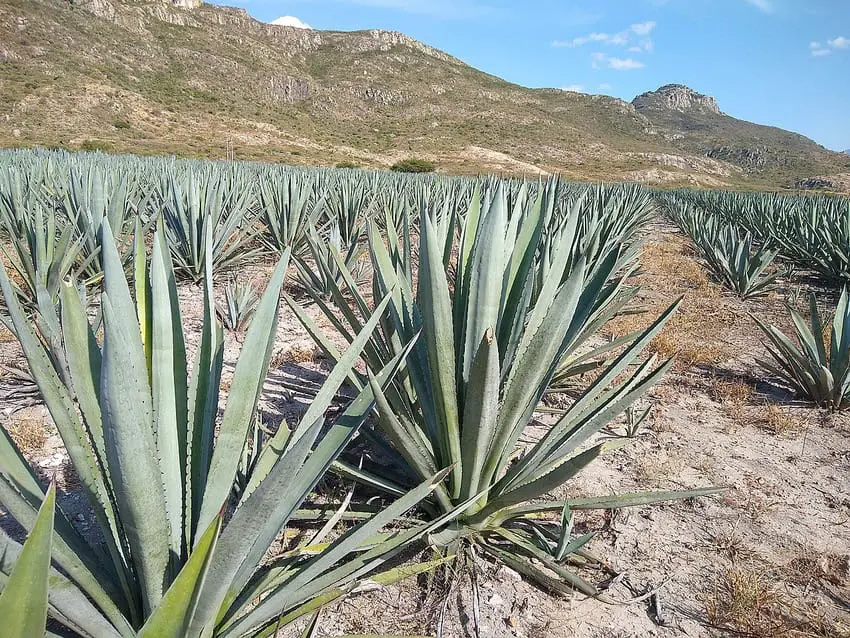Sales of mezcal have risen rapidly in recent years. The global market for the agave-based Mexican spirit was estimated at US $387 million in 2020, but by 2023 that valuation had skyrocketed north of one billion. It’s expected to double again, and then some, to over $2.5 billion by 2032. What’s driving the interest? The traditional methods often used to produce this spirit — particularly in the artisanal category, which accounts for over 95% of all mezcal made in Mexico — have proven increasingly attractive to consumers who crave authenticity.
Artisanal and ancestral mezcals are made without industrial production equipment like autoclave ovens and diffusers, which means they’re made in far lesser quantities, for example, than most popular tequilas. They’re overwhelmingly made in a few Mexican states: the product’s appellation of origin means that nine states are legally allowed to use the name mezcal for liquor they produce, but Oaxaca makes the vast majority, over 90%. The premium price charged for many mezcals thus often comes not from luxury markups to attract upmarket consumers but from the time-consuming methods used to make these spirits, with much of the work done by hand or horse.

However, that’s not the only reason mezcal de pechuga commands such high prices. This unique liquor, traditionally made in small batches for harvest celebrations and rites of passage, has yet to experience the type of popularity enjoyed by other premium mezcals. As the name “pechuga” — Spanish for breast — suggests, chicken breast or other meats — notably turkey and rabbit — are used to infuse the spirit, as are any number of fruits, nuts, herbs and spices. Yes, mezcal de pechuga is expensive, with bottles sometimes costing hundreds of dollars. Meat is part of the reason why.
The history of mezcal de pechuga
Mezcal de pechuga is a very unusual product, so it should come as no surprise that its origin is shrouded in the mists of history. For example, it predates the custom of putting worms in mezcal bottles. That practice was the brainchild of Jacobo Lozano Páez and originated in 1940. Originally from Chihuahua, Lozano eventually found work in a liquor store in Mexico City. To distinguish the Oaxaca-made mezcal he and his wife were bottling from the tequila they sold, he added a worm to the mezcal bottles. It turned out to be a stroke of marketing genius.
Lozano’s mezcal was sourced from the Méndez family in Santiago Matatlán, a mezcal capital in Oaxaca and one of the reputed birthplaces of mezcal de pechuga. An old-timer interviewed by mezcal writer Alvin Starkman credits the invention of this style to Ramón Sánchez, who arrived in Santiago Matatlán circa 1930. Sánchez subsequently threw a party for a local musician, Chuy Rasgado, unveiling a bottle of mezcal de pechuga for the occasion — the first time many locals had ever seen one.
But Sánchez was from Río Seco, and it should be noted that mezcal de pechuga has been made in many towns and villages in Oaxaca, each with its signature recipe. Documented evidence suggests they were made as far back as 1863.
How México’s most unusual mezcal is made
In most cases, mezcal de pechuga is triple-distilled, with the agave spirit distilled twice before meat and other ingredients are added to the mix for the final flavor-infusing distillation. But there’s plenty of work that has to be done first. First the agave heart, or piña, has to be uncovered in harvested plants. This is accomplished by chopping off the agave’s pencas, or leaves, typically with a machete. The piñas must be roasted, a days-long process done in stone-lined earthen pits. They are then milled with a large stone wheel called a tahona, pulled by a horse or donkey and fermented in wooden vats.
Clay pots or copper stills are used for distillation. The former are more traditional, with the latter prohibited for use in ancestral mezcals. Copper, however, is permissible for artisanal mezcals, the most common category produced. The chicken breast or other raw meat of choice is suspended in the still and cooked via the steamy vapors from the final distillation, along with any other desired flavoring ingredients. When it’s over, only bones remain.

It has been speculated that pechuga was invented to mask inferior mezcal, but no evidence supports this claim. On the contrary, pechuga is made almost entirely with espadín, the most commonly used of the 50 or so agave species harvested for mezcal production. Indeed, according to a 2023 report by the Mexican Regulatory Council for Mezcal Quality (Comercam), more than 80% of mezcals are made with espadín. Typically, no aging is given to mezcal de pechuga after distillation.
Why mezcal de pechuga is so expensive
The meat certainly contributes to the cost of mezcal de pechuga. As La Luna Mezcal notes: “In Oaxaca, mainly, allocating an animal for the preparation of a mezcal implies an extra cost because animals are scarce for human consumption.” But limited supply is also a factor. Pechuga is not a mezcal style produced in large quantities. Even as it is now increasingly made for the marketplace instead of in villages for birthdays or holiday celebrations, small batches remain the rule. Oaxacan producer Siete Misterios is an extreme example of this ethos, making only about 500 liters annually.
The traditional methods used for production and the labor required also contribute to the elevated prices. So, too, does the effort put into growing the agave, which must age for years before being harvested. Espadín, typically used for mezcal de pechuga, must mature for six to eight years.
What mezcal de pechuga tastes like
If you’re afraid to try mezcal de pechuga because you think it will taste like chicken, don’t be. The addition of meat during the final distillation is most noticeable in the collagen-enhanced mouthfeel of the mezcal, created by the meat’s protein. Meat does add a savoriness to mezcal’s typical smoky flavor, with a touch of sweetness courtesy of the fruits used adding even more complexity.
Properly speaking, mezcal de pechuga should be sipped slowly from a small glass, like the traditional veladora. Slowly is the key word. No ice is needed, nor additional ingredients to make it a cocktail. This moment was only made possible via extensive time and effort. Treat it like the celebratory experience it’s intended to be.
Chris Sands is the Cabo San Lucas local expert for the USA Today travel website 10 Best, writer of Fodor’s Los Cabos travel guidebook, and a contributor to numerous websites and publications, including Tasting Table, Marriott Bonvoy Traveler, Forbes Travel Guide, Porthole Cruise, Cabo Living and Mexico News Daily. His specialty is travel-related content and lifestyle features focused on food, wine and golf.
